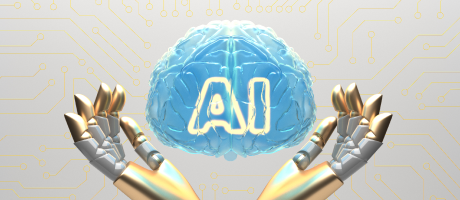Blog Posts & Blog Archives
All Blogs / it-and-computer
The Evolution of Hacking and its Types
Discover the evolution of hacking from its early days to modern threats like ransomware, phishing, and malware. Learn how to enhance cybersecurity
Monday, December 2, 2024
The Evolution of Hacking and its Types
Hacking has transformed from a mere hobby into a serious threat to individuals, businesses, and even governments. What was once seen as harmless online antics has escalated into a major concern that affects us all. As our world becomes increasingly interconnected through digital means, it's essential to understand the evolution of hacking, recognize its warning signs, and explore strategies to enhance cybersecurity and safeguard sensitive data.
The Evolution of Hacking
Early Hacking:
The term "hacking" initially described a form of exploratory programming, where early hackers were passionate individuals eager to grasp the inner workings of computer systems. They often experimented with systems and networks without any harmful intentions. During the 1960s and 1970s, hacking was viewed as a creative and intellectual endeavor, exemplified by groups like the MIT Tech Model Railroad Club, who played with computer code to expand the limits of technological possibilities.
Hacking Becomes Malicious
By the 1980s, hacking started to shift towards more malicious activities. With the rise of personal computers and networks, hackers began exploiting vulnerabilities for personal gain. The 1986 "Computer Fraud and Abuse Act" in the United States was introduced to combat this emerging threat. This era also saw the rise of the term data breach, where hackers gained unauthorised access to sensitive data.
In the 1990s and 2000s, hacking grew even more sophisticated, targeting businesses and government systems. Cybercriminals developed tools like viruses, worms, and trojans to steal personal and financial information. High-profile breaches like those involving Yahoo, Target, and Equifax in the 2010s demonstrated the devastating effects of large-scale hacks.
Modern-Day Hacking:
Today, hacking is a global issue, with attacks ranging from ransomware and phishing to advanced persistent threats (APTs). Modern hackers often collaborate in large syndicates, creating sophisticated attacks that target everything from corporate secrets to government databases. The scale and complexity of these attacks have given rise to a thriving industry in cybersecurity, where businesses invest heavily in protecting themselves from constant threats.
Types of Hacking
1. Phishing
Phishing is one of the most common and simplest forms of hacking. It involves tricking users into revealing personal information like usernames, passwords, or financial data. Phishing attacks usually come through fake emails or websites that appear legitimate. Despite its simplicity, phishing remains a highly effective form of hacking.
2. Malware
Malware is destructive software designed to disrupt, damage, or gain illegal access to computer systems. When malware infiltrates a system, it can steal important data, change files, or even lock the device until a payment for ransom is made.
3. Denial of Service (DoS) Attacks
In a DoS attack, hackers overwhelm a website or online service with traffic, causing it to crash or become unavailable. When conducted on a larger scale, such as Distributed Denial of Service (DDoS), these attacks can disrupt major websites, networks, and online services.
4. Man-in-the-Middle (MitM) Attacks
Man-in-the-Middle (MitM) attacks occur when a hacker intercepts communication between two parties in order to steal data or manipulate the messages sent. This frequently occurs on insecure networks, such as public Wi-Fi, where attackers may steal important data, including login passwords.
5. SQL Injection
SQL injections target databases by inserting malicious code into an application’s database query. This type of attack is commonly used to access, modify, or delete sensitive data, often from websites with poor security practices.
6. Zero-Day Exploits
A zero-day exploit takes advantage of vulnerabilities in software that are unknown to the software vendor. Since the vulnerability is undiscovered, there is no patch or fix available, making it an extremely dangerous form of attack.
7. Ransomware
Ransomware involves hackers encrypting a victim’s data and demanding payment in exchange for decrypting it. This type of attack has grown rapidly in recent years, targeting everything from small businesses to large corporations and even government institutions.
Conclusion:
Hacking has evolved significantly over the years, shifting from a form of exploration to more organised and harmful activities. As technology has advanced, so too have the methods and strategies used in hacking. It's essential to understand the different types of hacking, recognize the signs of a potential data breach, and implement effective cybersecurity measures to prevent attacks and protect sensitive information. By educating yourself and taking proactive measures, you can reduce your risk of becoming a victim of hacking and safeguard your digital assets.
Related Blogs
The Evolution of Artificial Intelligence from Its Early Days to the Present
Explore the journey of Artificial Intelligence, from myths to cutting-edge technology, highlighting key pioneers, breakthroughs, and ethical considerations.
By WelinkJobs | Monday, April 15, 2024
The Evolution of Wireless Networks, Their Challenges, and Their Promising Technologies
Explore the evolution of wireless networks from 1G to 5G, the challenges faced, and promising future technologies like 6G, quantum communication.
By WelinkJobs | Friday, May 24, 2024



